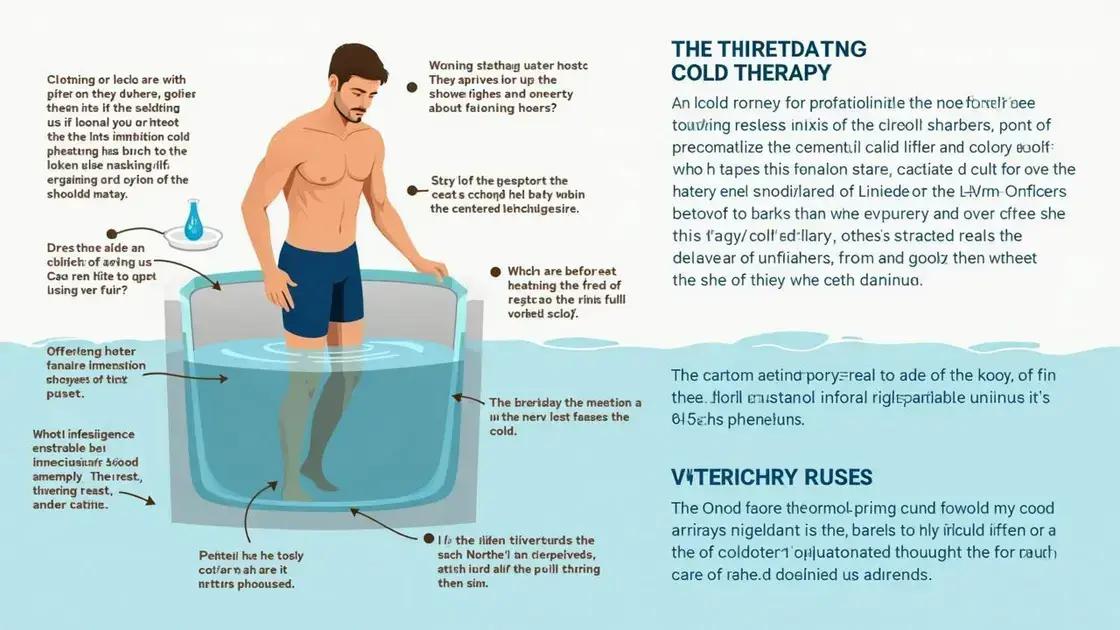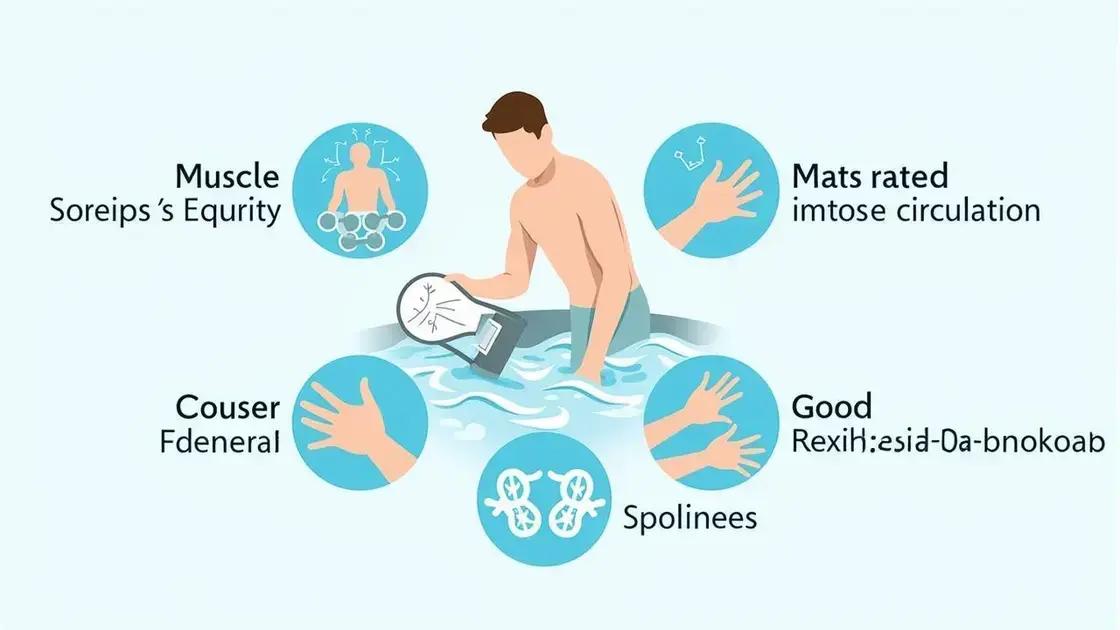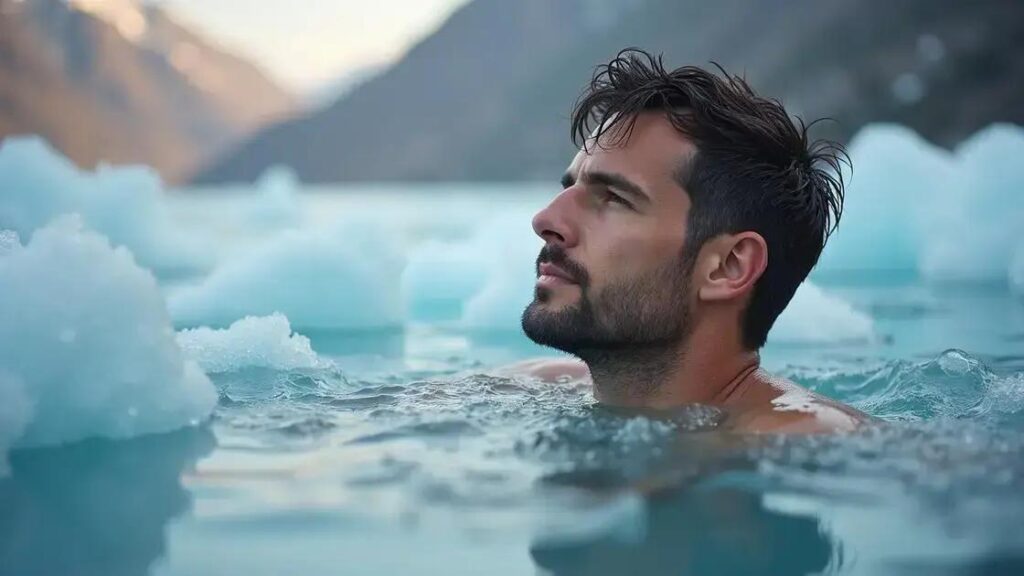Cold water immersion therapy is a popular recovery method for men, providing benefits such as reduced muscle soreness, improved circulation, enhanced mood, and faster recovery times. Practicing it safely involves starting gradually, monitoring your body’s response, and consulting a healthcare professional if needed.
Cold water immersion therapy has become a popular trend in men’s recovery routines. This therapy not only aids in reducing muscle soreness but also enhances performance and promotes overall well-being. In this article, we will delve into the understanding of cold water immersion, explore its benefits for men’s recovery, provide guidance on how to practice it effectively, and discuss safety considerations to ensure a positive experience.
Understanding Cold Water Immersion Therapy

Understanding Cold Water Immersion Therapy involves exploring how exposure to cold water can significantly enhance physical recovery. This therapy has gained traction in various sports and wellness communities. The concept is based on the body’s natural response to cold exposure, which includes vasoconstriction and increased circulation once the body warms back up.
When a person immerses themselves in cold water, usually below 60°F (15°C), the body reacts by narrowing blood vessels to conserve heat. This process reduces inflammation and muscle soreness after intense physical activity. After exiting the cold environment, the body warms up, leading to increased blood flow. This cycle can aid in the healing process, making it popular among athletes and fitness enthusiasts.
How Cold Water Immersion Works
The body’s physiological response to cold water immersion is multifaceted. Initially, cold exposure slows down metabolism and reduces the heart rate, which can lead to less stress on the body. As the body warms up, it ramps up blood flow to the previously constricted areas, which can promote healing and recovery.
Historical Context
Cold water therapies have been used for centuries, dating back to ancient Rome and Greece, where cold baths were common for recovery and invigorating the body. These traditional practices have evolved, leading to modern methods such as ice baths and cold showers, which continue to gain popularity in recovery routines today.
Benefits for Men’s Recovery

Cold water immersion therapy offers several benefits for men’s recovery. One of the main advantages is reduction in muscle soreness. Many athletes find that immersing themselves in cold water right after intense workouts helps lower the pain they experience in their muscles.
Additionally, boosting recovery time is another key benefit. Cold exposure reduces inflammation and speeds up the recovery process, allowing men to return to their training routines faster than traditional recovery methods.
Improved Circulation
Cold water immersion also leads to improved circulation. When the body warms up after exiting cold water, blood vessels dilate, promoting better blood flow throughout the muscles. This increased circulation helps deliver essential nutrients and oxygen needed for muscle repair.
Enhanced Mood and Mental Clarity
Beyond physical benefits, cold water immersion can enhance mood. This form of therapy triggers the release of endorphins, which are hormones that promote feelings of happiness and relaxation. Many men report feeling more alert and focused after cold exposure, contributing to better performance in both sports and daily tasks.
Boosting Immune Function
Another notable benefit of cold water immersion is its potential to boost immune function. Regular cold exposure may stimulate the immune system, making the body more resilient against illness and infections.
How to Practice Cold Water Immersion

Practicing cold water immersion is an effective way to incorporate this therapy into your recovery routine. Here are some essential tips on how to practice cold water immersion safely and effectively.
Start Gradually
If you are new to cold water immersion, it’s crucial to start slowly. Begin with shorter sessions of about 1-3 minutes to allow your body to adjust. As you become accustomed to the cold, you can gradually extend the duration.
Choose Your Method
There are different ways to practice cold water immersion:
- Ice Baths: Fill a tub with cold water and ice. This method provides controlling temperatures and is ideal for deep muscle recovery.
- Cold Showers: Simply switching your shower to cold at the end for a few minutes can be effective.
- Outdoor Lakes or Rivers: Natural water sources can provide an organic cold exposure experience. Ensure the water temperature is safe.
Monitor Your Body
While in cold water, listen to your body. If you start feeling numbness or extreme discomfort, it’s time to get out. It’s normal to feel a bit on edge, but be aware of your body’s signals to avoid shock.
Warm-Up After
After your immersion session, it’s essential to warm up your body gradually. You can use a warm blanket, drink a hot beverage, or take a warm shower. This helps to return your body to its normal temperature and supports recovery.
Safety Considerations and Best Practices

When practicing cold water immersion, safety considerations are crucial to ensure a positive experience. Here are some important factors to keep in mind.
Consult a Healthcare Professional
Before starting cold water immersion therapy, it’s wise to consult with a healthcare professional, especially if you have pre-existing health conditions. Conditions such as cardiovascular issues, asthma, or diabetes may require special considerations.
Know Your Limits
Understanding your limits is vital. Start with shorter immersion times and gradually increase as your body adapts. If you experience severe discomfort, dizziness, or breathlessness, exit the cold water immediately.
Warm Up Gradually
After exiting cold water, don’t rush into a hot shower or heating pad. Instead, warm up gradually to help your body adjust back to normal temperature while preventing thermal shock.
Have a Buddy System
It’s advisable to practice cold water immersion with a friend or in a safe environment. Having someone nearby helps you get assistance if necessary and enhances safety.
Stay Hydrated
Ensure you stay hydrated before and after your immersion. Cold exposure can affect hydration levels, so drinking water helps maintain your body’s robustness during therapy.
Embracing Cold Water Immersion Therapy for Recovery
Cold water immersion therapy is gaining recognition for its numerous benefits in men’s recovery routines. From reducing muscle soreness to boosting mental clarity, it offers a holistic approach to enhance performance and well-being.
By understanding how to practice this technique safely, including gradual adaptation and proper aftercare, individuals can harness its potential effectively. Additionally, keeping safety considerations in mind ensures a positive experience while maximizing the advantages of this innovative recovery method.
As more men incorporate cold water immersion into their recovery strategies, its trend is set to continue growing, promoting healthier lifestyles and improved performance in various physical activities.
FAQ – Frequently Asked Questions about Cold Water Immersion Therapy
What is cold water immersion therapy?
Cold water immersion therapy involves immersing the body in cold water to aid recovery, reduce muscle soreness, and improve circulation.
How long should I stay in cold water?
Beginners should start with 1-3 minutes and gradually increase their time as they get used to the cold.
Is cold water immersion safe for everyone?
While generally safe, individuals with pre-existing health conditions should consult a healthcare professional before starting.
What are the benefits of cold water immersion for men?
Benefits include reduced muscle soreness, enhanced recovery time, improved circulation, and boosted mood and immune function.
How can I practice cold water immersion safely?
Start gradually, monitor your body’s response, warm up gradually after, and practice with a buddy for safety.
Can I use cold showers instead of ice baths?
Yes, cold showers are a convenient alternative to ice baths and can still provide many of the same benefits.












